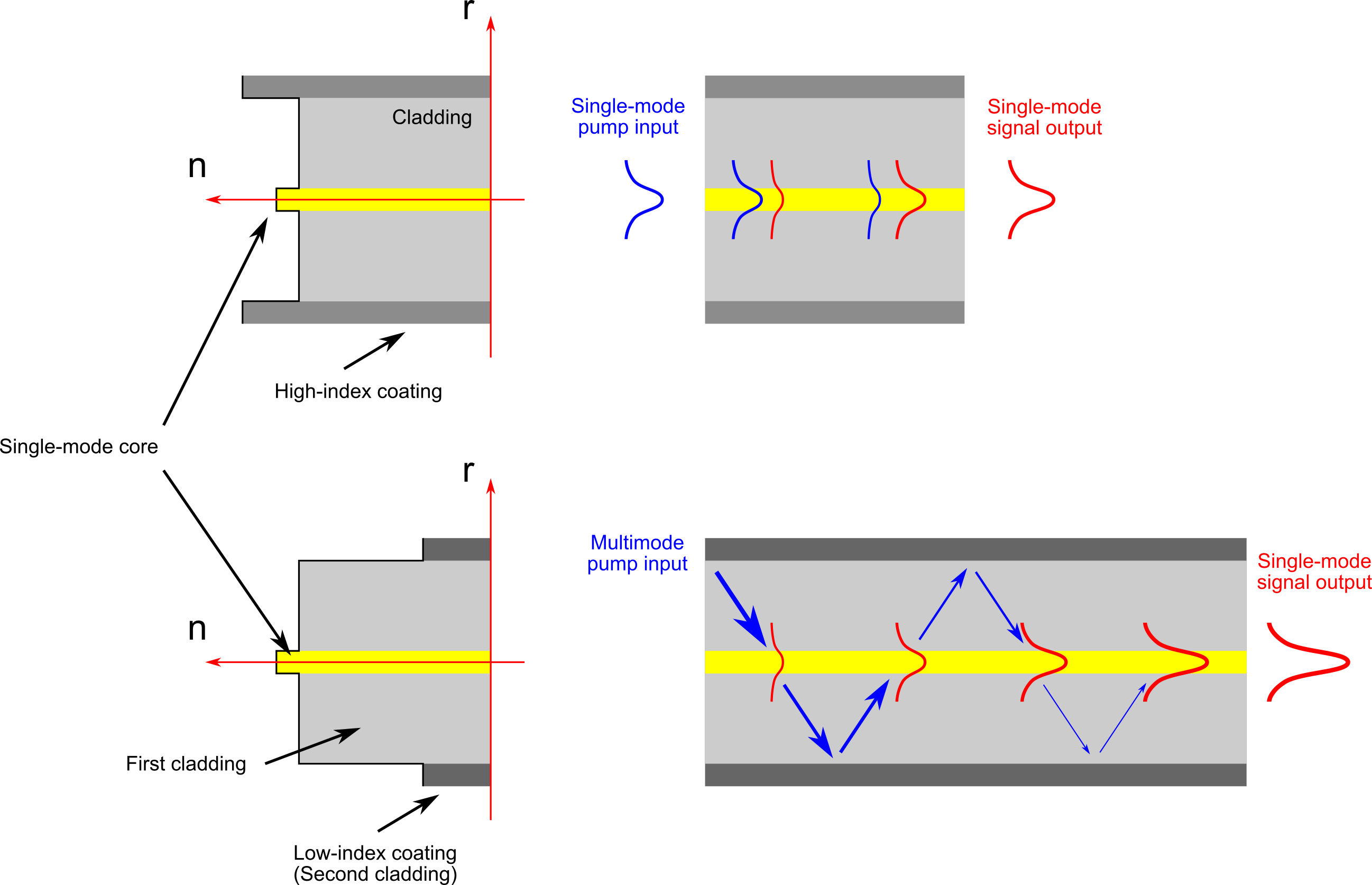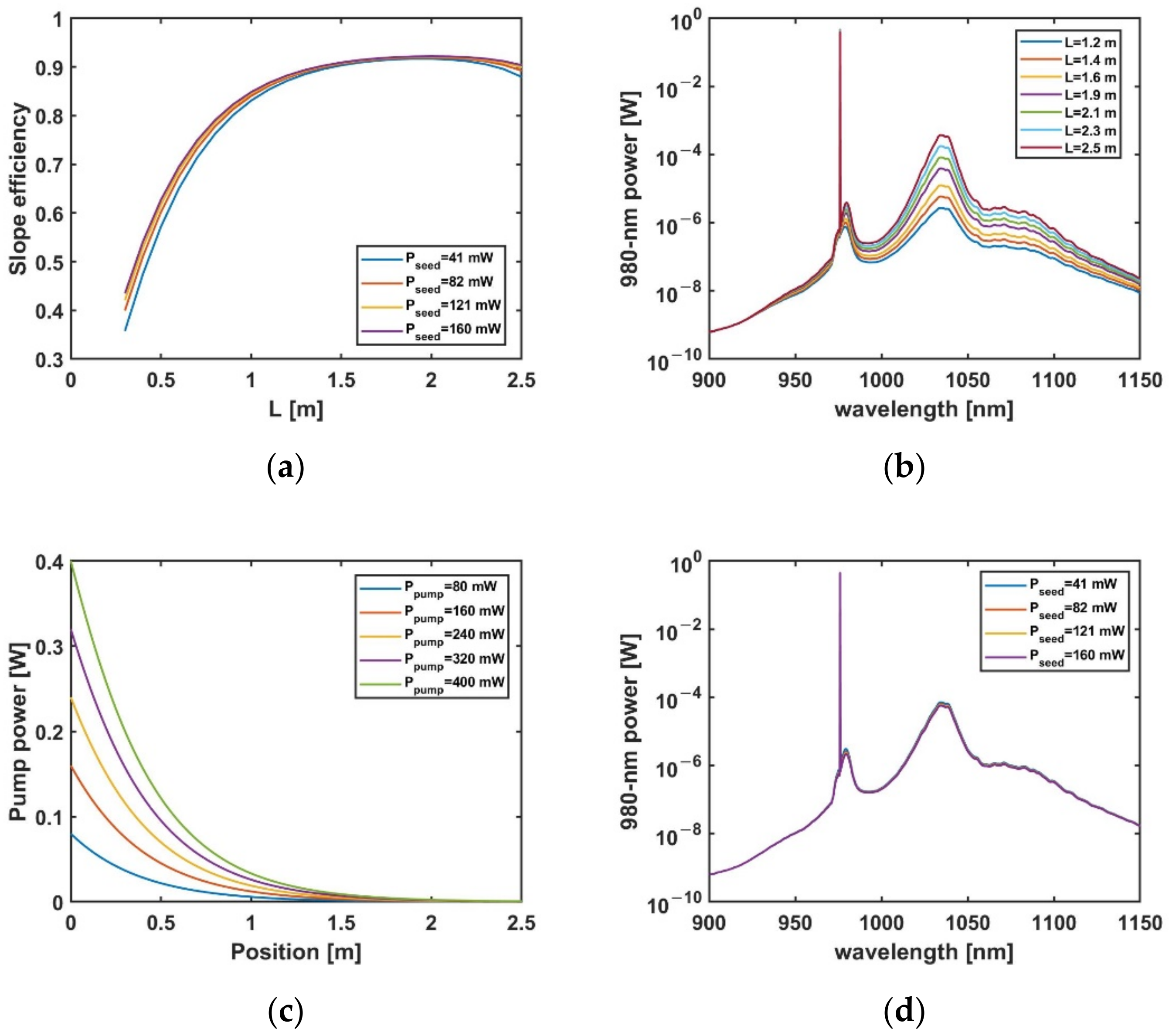Contents

Source: FiberLabs Inc.
Understanding Pump Absorption in Fiber Amplifiers
Fiber amplifiers and lasers are pivotal in optical communication and various other applications. A fundamental consideration in their design is determining the appropriate length of rare-earth-doped fiber. This decision is crucial for optimizing the absorption of pump light, which in turn affects the efficiency and performance of the amplifier or laser.
The Basics of Pump Absorption
At first glance, determining the fiber length might seem straightforward. For instance, if a fiber has a specified pump absorption of 5 dB/m at a given wavelength, one might expect that a 2-meter fiber would absorb 10 dB of pump light. However, this simplistic calculation often leads to incorrect assumptions due to the phenomenon of pump absorption saturation.
Saturation Effects in Pump Absorption
Pump absorption saturation occurs when the absorption efficiency decreases as the pump power increases. This is because the absorption specifications are typically given for low-intensity conditions, where saturation effects are minimal. In real-world applications, the pump power is often much higher, leading to significant saturation and consequently weaker absorption than anticipated.
Simulation and Modeling
To accurately predict the behavior of fiber amplifiers, computer simulations are invaluable. These simulations consider the complex interactions between light waves and the doped fiber, allowing for a more precise determination of the optimal fiber length.
Example: Ytterbium-Doped Single-Mode Fiber
Consider an ytterbium-doped silica-based single-mode fiber with a ground state absorption of 5 dB/m at a pump wavelength of 940 nm. When a moderate pump power of 300 mW is injected into a 2-meter fiber, one might expect substantial absorption. However, due to saturation, the absorption is only about 1.7 dB, illustrating the need for longer fiber lengths.

Optimizing Fiber Length
By extending the fiber length, the overall pump absorption can be improved. However, additional complexities arise, such as amplified spontaneous emission (ASE), which can affect the excitation levels within the fiber. Injecting a signal at the output can help mitigate these effects by reducing the upper-state population and enhancing pump absorption.
Challenges in Fiber Amplifier Design
The design of fiber amplifiers is further complicated by the choice of pump wavelength. For example, at a pump wavelength of 975 nm, the absorption cross-sections are high, leading to even stronger saturation effects. This necessitates careful consideration of all interacting factors to achieve optimal amplifier performance.
Conclusion
Designing efficient fiber amplifiers requires a deep understanding of pump absorption, saturation effects, and the interplay of various optical processes. Computer simulations are essential tools for accurately predicting amplifier behavior and optimizing design parameters. By considering these factors, engineers can avoid trial-and-error approaches and develop more effective fiber amplification systems.

Source: MDPI
Feel free to comment your thoughts.



